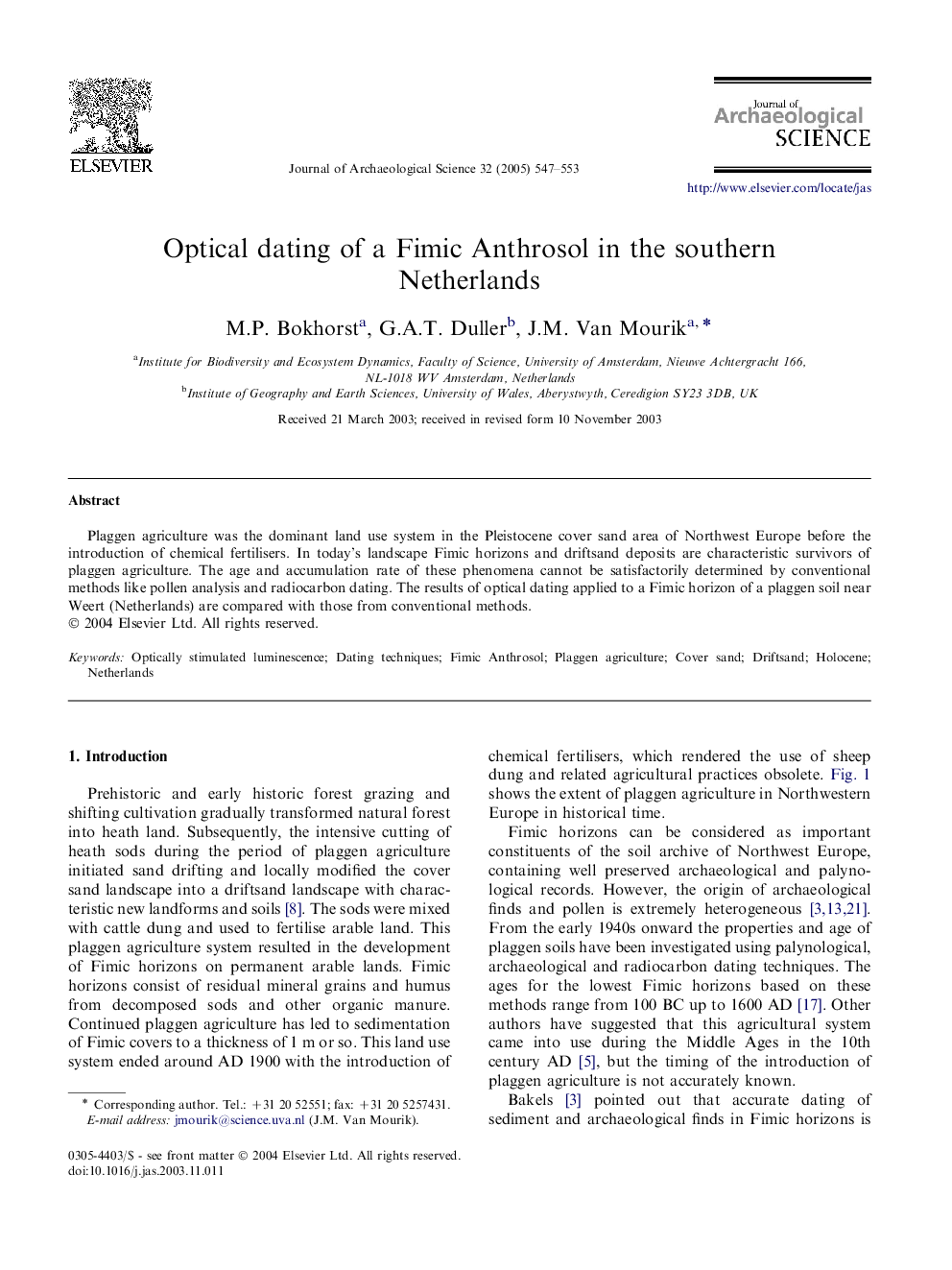| Article ID | Journal | Published Year | Pages | File Type |
|---|---|---|---|---|
| 10499555 | Journal of Archaeological Science | 2005 | 7 Pages |
Abstract
Plaggen agriculture was the dominant land use system in the Pleistocene cover sand area of Northwest Europe before the introduction of chemical fertilisers. In today's landscape Fimic horizons and driftsand deposits are characteristic survivors of plaggen agriculture. The age and accumulation rate of these phenomena cannot be satisfactorily determined by conventional methods like pollen analysis and radiocarbon dating. The results of optical dating applied to a Fimic horizon of a plaggen soil near Weert (Netherlands) are compared with those from conventional methods.
Related Topics
Physical Sciences and Engineering
Materials Science
Materials Science (General)
Authors
M.P. Bokhorst, G.A.T. Duller, J.M. Van Mourik,
